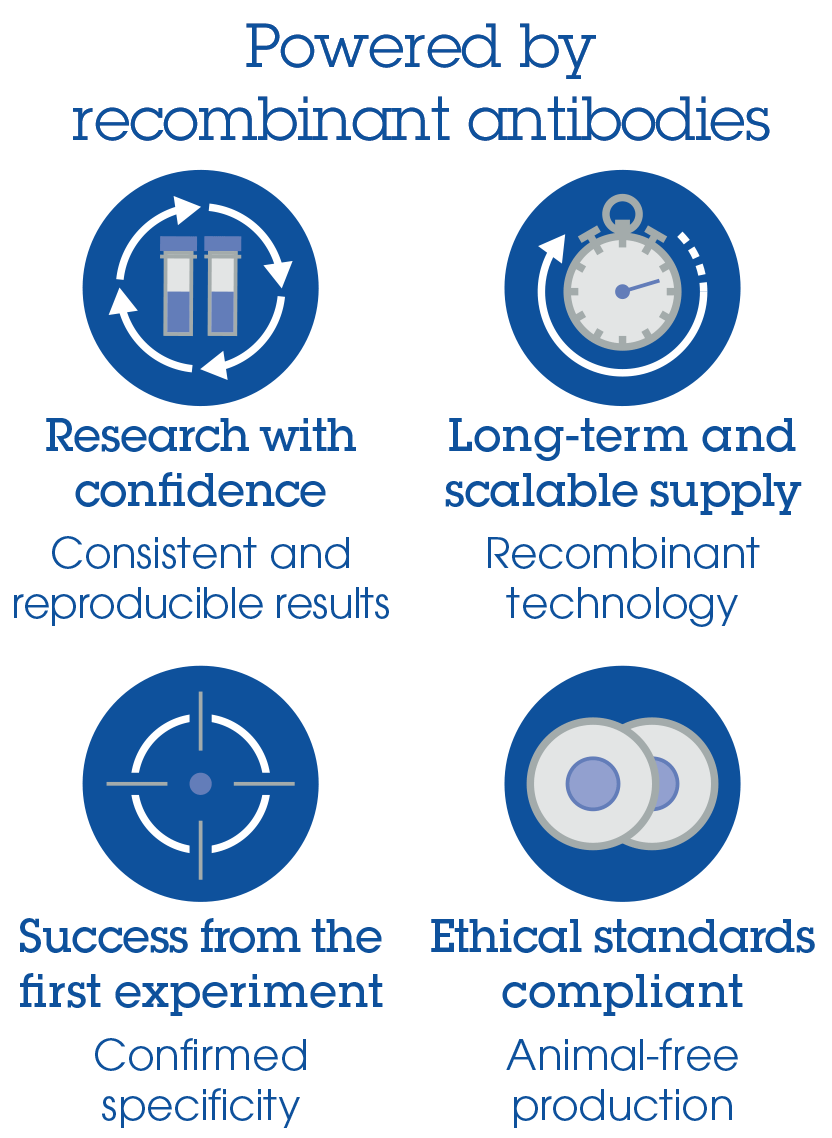Human Prealbumin Antibody Pair - BSA and Azide free (ab244071)
Key features and details
- Unconjugated capture and detector antibodies
- Adaptable to any antibody pair-based assay format
- Antibody concentration ~ 1 mg/ml
- BSA and azide free buffer - ready for conjugation
- Reacts with: Human
Overview
-
Product name
Human Prealbumin Antibody Pair - BSA and Azide free
See all Prealbumin kits -
Assay type
ELISA set -
Range
12.5 pg/ml - 800 pg/ml -
Species reactivity
Reacts with: Human -
Product overview
The Antibody Pair can be used to quantify Human Prealbumin. BSA and Azide free antibody pairs include unconjugated capture and detector antibodies suitable for sandwich ELISAs. The antibodies are provided at an approximate concentration of 1 mg/ml as measured by the protein A280 method. The recommended antibody orientation is based on internal optimization for ELISA-based assays. Antibody orientation is assay dependent and needs to be optimized for each assay type. Both capture and detector antibodies are rabbit monoclonal antibodies delivering consistent, specific, and sensitive results.
For additional information on the performance of the antibody pair, see the equivalent SimpleStep ELISA® Kit (ab231920), which uses the same antibodies. However, due to differences in their formulation, this antibody pair cannot be used with the consumables provided with our SimpleStep ELISA Kits. Please note that the range provided for the pairs is only an estimation based on the performance of the related product using the same antibody pair. Performance of the antibody pair will depend on the specific characteristics of your assay. We guarantee the product works in sandwich ELISA, but we do not guarantee the sensitivity or dynamic range of the antibody pair in your assay.
Download SDS here.
-
Tested applications
Suitable for: Sandwich ELISAmore details -
Platform
Reagents
Properties
-
Storage instructions
Store at +4°C. Please refer to protocols. -
Carrier free
Yes -
Components 10 x 96 tests Human Prealbumin Capture Antibody (unconjugated) 1 x 100µg Human Prealbumin Detector Antibody (unconjugated) 1 x 100µg -
Research areas
-
Function
Thyroid hormone-binding protein. Probably transports thyroxine from the bloodstream to the brain. -
Tissue specificity
Detected in serum and cerebrospinal fluid (at protein level). Highly expressed in choroid plexus epithelial cells. Detected in retina pigment epithelium and liver. -
Involvement in disease
Defects in TTR are the cause of amyloidosis transthyretin-related (AMYL-TTR) [MIM:105210]. A hereditary generalized amyloidosis due to transthyretin amyloid deposition. Protein fibrils can form in different tissues leading to amyloid polyneuropathies, amyloidotic cardiomyopathy, carpal tunnel syndrome, systemic senile amyloidosis. The disease includes leptomeningeal amyloidosis that is characterized by primary involvement of the central nervous system. Neuropathologic examination shows amyloid in the walls of leptomeningeal vessels, in pia arachnoid, and subpial deposits. Some patients also develop vitreous amyloid deposition that leads to visual impairment (oculoleptomeningeal amyloidosis). Clinical features include seizures, stroke-like episodes, dementia, psychomotor deterioration, variable amyloid deposition in the vitreous humor.
Defects in TTR are a cause of hyperthyroxinemia dystransthyretinemic euthyroidal (HTDE) [MIM:145680]. It is a condition characterized by elevation of total and free thyroxine in healthy, euthyroid persons without detectable binding protein abnormalities.
Defects in TTR are a cause of carpal tunnel syndrome type 1 (CTS1) [MIM:115430]. It is a condition characterized by entrapment of the median nerve within the carpal tunnel. Symptoms include burning pain and paresthesias involving the ventral surface of the hand and fingers which may radiate proximally. Impairment of sensation in the distribution of the median nerve and thenar muscle atrophy may occur. This condition may be associated with repetitive occupational trauma, wrist injuries, amyloid neuropathies, rheumatoid arthritis. -
Sequence similarities
Belongs to the transthyretin family. -
Domain
Each monomer has two 4-stranded beta sheets and the shape of a prolate ellipsoid. Antiparallel beta-sheet interactions link monomers into dimers. A short loop from each monomer forms the main dimer-dimer interaction. These two pairs of loops separate the opposed, convex beta-sheets of the dimers to form an internal channel. -
Cellular localization
Secreted. Cytoplasm. - Information by UniProt
-
Alternative names
- Amyloid polyneuropathy
- Amyloidosis I
- ATTR
see all -
Database links
- Entrez Gene: 7276 Human
- Omim: 176300 Human
- SwissProt: P02766 Human
- Unigene: 427202 Human
Images
-
To learn more about the advantages of recombinant antibodies see here.





